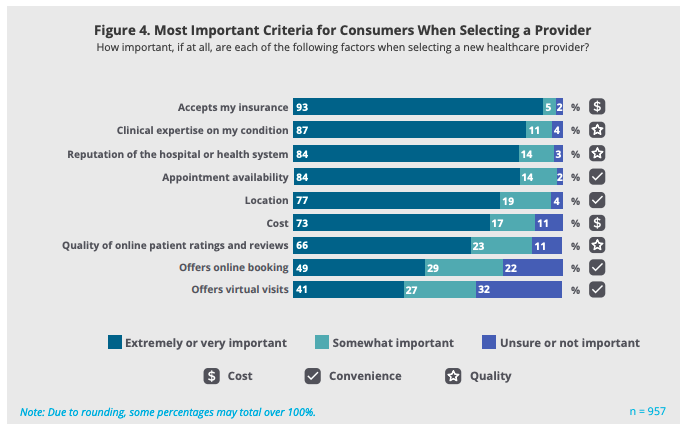
I first started answering this question over a decade ago (and still get it on a weekly basis today).
I was just starting to cut my teeth in the digital health world. As a hungry (but green) salesman, I was selling the first-ever patient-self-scheduling product into the enterprise.
The question from executives and physician-leaders was frequent and consistent:
”How do we know these patients wouldn’t have come to use anyway?”
The short answer is you don’t.
But as we know, online scheduling in the health system space is widely adopted.
It didn’t happen by accident. It happened when executives opened the door to a more honest, nuanced conversation about what growth strategies made sense for their org.
Here are some of my thoughts to help you in your conversations.
However, convenience alone is not enough to be king... It must include digital.
Why?
•It’s what patients expect - 60% of consumers expect their healthcare digital experience to mirror that of retail. link
•It’s where patients are - 80% of consumers have used the internet to make a healthcare-related search in the past year. link
•You’re not the only stop - 77% of consumers who searched for care online reported using at least two sources. link
This is about the kind of data that your initiative – and, by extension, the vendor you choose – can generate to help paint a picture of attribution (or what’s responsible for driving some metric you care about).
When it comes to a digital patient acquisition initiative, here are a few key metrics you can use:
•Traffic
•Conversion rate
•Self-reported new
A bit about what those metrics point to:
•Traffic is a great proxy for relevance. If potential patients are choosing to go to the tool, that’s a great sign that they value it.
•Conversion rate is an efficiency metric. If convenience is king, friction is a king killer. Making a process easy to use increases the likelihood someone gets to the end. (Especially someone new. They’ve got less to lose.)
•Self-reported new is especially powerful in a comparative sense. Look at your other conversion tools (phones, forms, etc). If a digital tool has a higher percentage of new patients, then it’s a pretty good way to say, “No, they wouldn’t have come here anyway.”
I found this study from Kyruus that identifies and weighs some of the top factors for making healthcare decisions.
They break it down into cost, convenience, and quality factors:

So what do I mean by “perfect doesn’t exist?”
If you were the only option on planet Earth that could solve that patient’s problem, then maybe you could guarantee they’d choose you to solve it for them.
But
•They’d have to know about you.
•They’d have to know you can solve their problem.
•They’d have to know they have a problem in the first place.
It gets silly quickly, but my point remains the same - Different factors go into choosing an MSK provider.
So logically speaking, the best thing you can do for the growth of your business is to look at the research:
•The consumer research that shows patients want digital experiences and will choose providers based on it.
•The self-generated research from your tools and vendors to paint a picture around the attribution of your growth efforts.
Ultimately, I recognized there is no perfect answer to this question, but I also know there is no perfect business.
Picture this.
You’re presenting a new initiative to help drive new patient acquisition.
A board member raises their hand and asks the magic question. ”How do we know the patients that come through this tool wouldn’t have come anyway?”
Your response:
“We don’t… But here’s what we do know. Consumer research tells us digital experience influences who patients choose. Results from Hatch (or this vendor) show a majority of patients going through the tool report being new.
And lastly, our situation isn’t perfect.
It might be perfect if:
•we were the only game in town
•patients had perfect awareness of our business
•we benefited from perfect conversion from first thought to choosing us.
But we’re not perfect.
I don’t believe everyone will always come to us. Just like I don’t believe we should turn off our website to save on expenses.
The game is changing. This is the kind of experience we need to deliver to compete.”